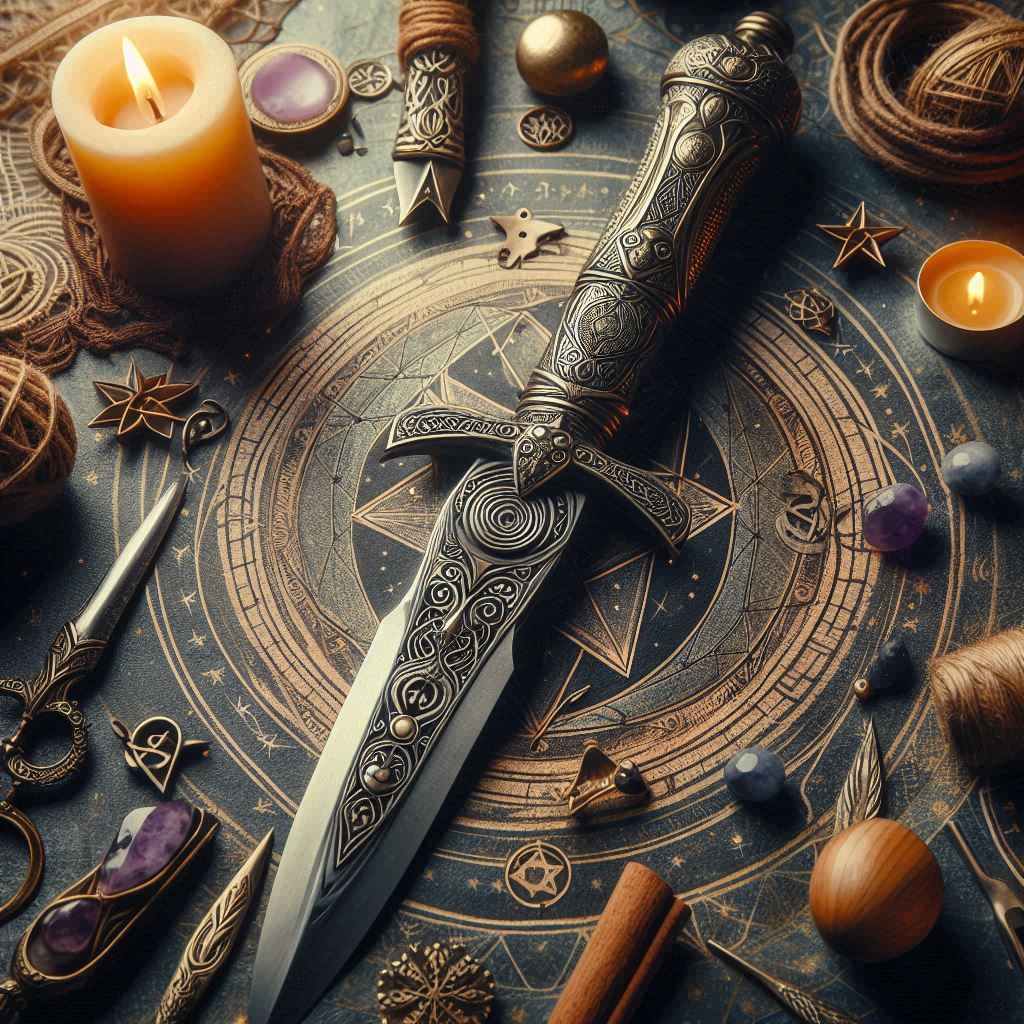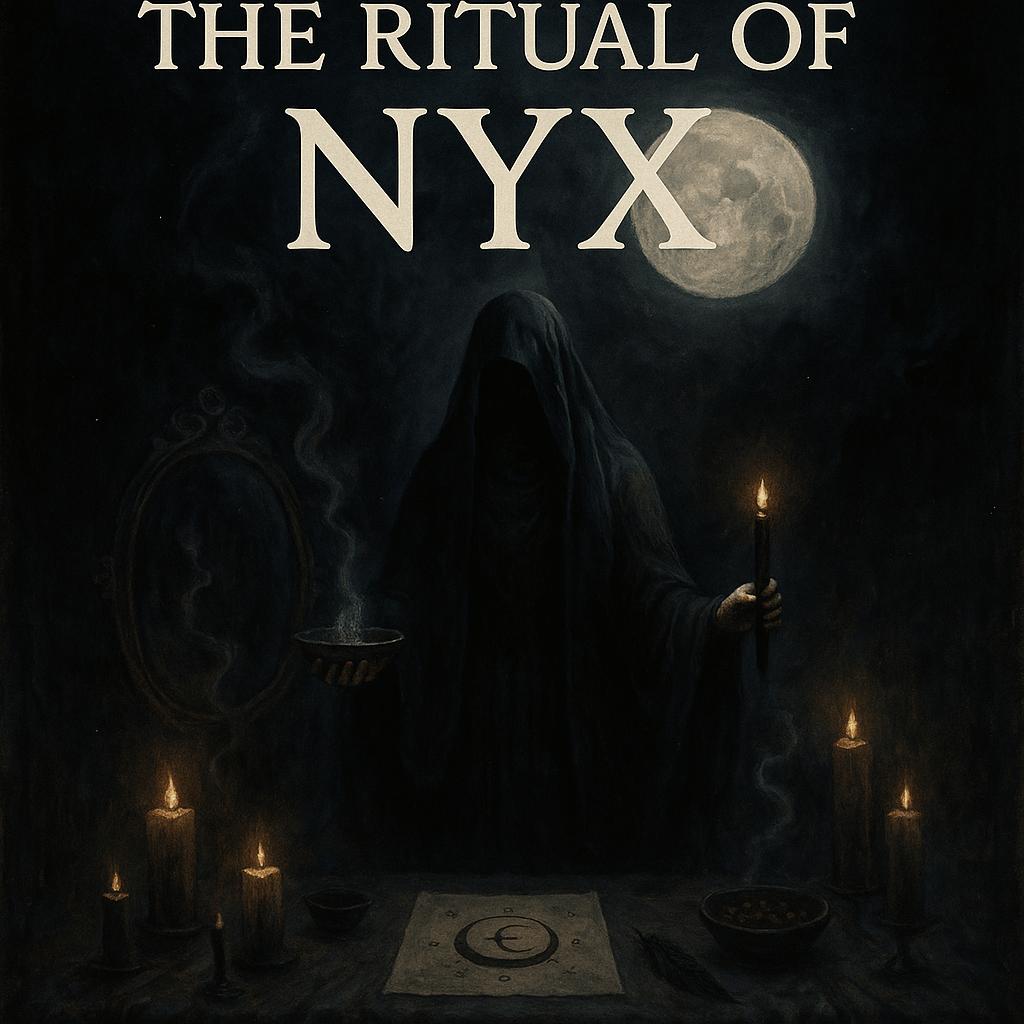Your cart is currently empty!

The Mystical Power of the Athame: Find the Perfect Ritual Blade for Your Magic
In the shadowed realms of magic and ancient rites, few tools possess the mystique and symbolic potency of the athame. This ritual dagger—dark-handled, double-edged—is far more than a mere blade. It’s a bridge, a conduit, an extension of the practitioner’s deepest will and intent. Unlike common knives, the athame rarely cuts anything in the physical world; instead, it pierces the unseen, tracing boundaries, summoning forces, and guiding energies in sacred ritual.
The athame’s origins are cloaked in myth, its power drawn from traditions as old as humankind’s yearning to touch the divine. In modern Paganism, Wicca, and magical practices around the world, the athame remains a vital companion in invoking elemental powers, casting protective circles, and consecrating ritual space. But beyond its ceremonial role, the athame represents a profound inner journey. This post will delve into the origins, symbols, and rituals surrounding the athame, offering glimpses of its role in the magical landscape, its transformative power, and its mysterious allure.
The Origins and Symbolism of the Athame
Shadows of History: An Ancient Tool of Power
The athame’s exact origins have been lost to the tides of time, with only hints and shadows left in sacred texts, legends, and folklore. Ceremonial daggers have appeared across cultures and epochs, with each tradition breathing life into its own version of the sacred blade. The Egyptians, for example, wielded sacred knives in rites to honor their gods, believing the blade to be a bridge to the divine, a way to cut through the veil between worlds. In the Greco-Roman mythos, daggers were sacred to Hermes and Mercury, gods of thresholds and boundaries, guiding souls across realms—a powerful parallel to the athame’s role in opening ritual space (Farrar & Farrar, 1996).
By the medieval period, the use of sacred knives grew within secret societies and occult practices, with grimoires instructing practitioners on how to consecrate ritual blades to summon spirits, bind energies, and cast protective circles. These enchanted daggers, steeped in ceremony, became essential for anyone who dared to work with powers beyond the ordinary. Aleister Crowley’s ceremonial magic writings in the 20th century would revive interest in ritual blades, providing the foundation from which Gerald Gardner would establish the athame as a central element in Wiccan practice (Crowley, 1929; Valiente, 1985).
In Wicca today, the athame serves as a direct descendant of these sacred daggers, a blade of ancient power for a modern spiritual journey. Its form and function—typically double-edged and with a black handle—represent duality, intention, and the practitioner’s control over energy. This is a blade that both reflects and shapes the practitioner’s will.
Crafting the Athame: A Sacred Dedication
For many practitioners, the journey with the athame begins with its crafting or consecration. The athame, after all, is no ordinary tool but a physical extension of the practitioner’s spirit and intent. Its form is often crafted with care: the dark handle absorbs energy, while its double edge signifies the dual forces of creation and destruction, the balance between light and shadow (Cunningham, 1988).
The practitioner may mark their athame with personal sigils, symbols, or even planetary signs, each engraving a silent vow between the blade and its bearer. For some, this act of dedication occurs in a moonlit ritual, where the athame is blessed under the watchful gaze of the goddess, or under the sun, to charge it with fire’s force. Such a ritual is one of bonding—a personal communion where the athame becomes more than an object; it becomes an ally in magic, a guide and protector of the practitioner’s journey through mystical realms (Grimassi, 2000).
The Role of the Athame in Ritual and Magic
Casting Circles: Drawing the Boundaries of the Sacred
One of the most hauntingly beautiful uses of the athame lies in casting a sacred circle, a space that shields and intensifies the energy within. With the athame held steady, the practitioner “draws” the circle into existence, tracing the boundary between the mundane and the mystical. Moving clockwise around the circle’s perimeter, they invoke the unseen, calling on spirits or elements to guard and guide. The athame serves as the practitioner’s focus, their will taking shape in the air, unseen but felt by all who stand within that space (Farrar & Farrar, 1996).
For instance, in a ritual beneath the full moon’s glow, a practitioner might cast a circle to commune with lunar energies. Each step and movement of the athame is an invitation to the Goddess, a request for protection as the practitioner opens themselves to receive messages, healing, or vision. The circle becomes both a boundary and a sanctuary, a place suspended between worlds. And at the close of the ritual, the athame is again used to “cut” open the circle, releasing energies raised within, dissolving the boundary, and gently drawing the practitioner back to the ordinary realm (Valiente, 1985).
Invoking and Directing the Elements
In the practice of Wicca, the athame is often associated with Fire, representing both creation and transformation. Yet, through its use, the athame can invoke and direct any of the elements, be it the grounding strength of Earth, the whispering wisdom of Air, the cleansing flow of Water, or the fierce flame of Fire. To summon these forces, the practitioner points their athame toward a symbol of the element—water for Water, incense for Air, or a candle for Fire—chanting words that call forth the element’s energy and invite it into the circle (Cunningham, 1988).
A Wiccan healing ritual, for example, might involve the element of Water. Holding the athame over a bowl filled with spring water, the practitioner envisions the blade as a channel, drawing in the qualities of Water: intuition, healing, and deep emotional clarity. With each word, the athame draws these qualities forth, transforming them into a balm that surrounds and heals the soul. Through this process, the athame acts as a vessel, a bridge between the seen and unseen, inviting elemental power to become part of the ritual’s tapestry (Crowley, 1929).
The Athame as a Tool of Will and Transformation
A Symbol of Empowerment and Discipline
In the hands of a practitioner, the athame embodies more than power; it represents a commitment to self-discipline and the mastery of one’s own path. As the practitioner learns to wield the athame, they also learn to focus and refine their will, directing their intent with clarity and purpose. Many believe that simply holding the athame brings clarity, grounding one’s vision, sharpening one’s focus, and fortifying one’s inner resolve (Valiente, 1985).
For instance, a practitioner preparing for a ritual of transformation might hold their athame and speak affirmations or personal vows, using the blade to focus and project their intent. With each word, they imbue the athame with their desire for change, channeling their will through the blade and into the universe. The athame thus becomes an ally in personal empowerment, a tool of manifestation, anchoring spiritual vision into the physical world (Grimassi, 2000).
Binding and Release Rituals: The Dance of Freedom and Restraint
The athame’s power extends to rituals of binding and release, where practitioners may seek to contain negative influences or sever ties that no longer serve their journey. Binding rituals, for instance, involve using the athame to restrict or neutralize energies that may be harmful. Pointing the athame at an object symbolizing the unwanted influence, the practitioner speaks words of binding, visualizing their will wrapping around and neutralizing the force (Cunningham, 1988).
In rituals of release, the athame’s edge comes into play as a symbol of freedom and liberation. Imagine a practitioner healing from a broken relationship. They might use the athame to “cut” through invisible cords, symbolizing the severance of lingering attachments. This gesture, simple yet profound, represents a release—a choice to let go, to walk freely into a new chapter. In these moments, the athame becomes a blade of liberation, a witness to the soul’s dance between holding on and letting go (Farrar & Farrar, 1996).
Conclusion: Embracing the Mystery of the Athame
The athame remains one of the most enigmatic and beloved tools in ritual magic, embodying dualities of power and restraint, creation and destruction. In casting circles, invoking elements, binding energies, or severing attachments, the athame is a vessel for the practitioner’s will and intent, a bridge between the visible world and the unseen.
To hold an athame is to connect with ages of magical tradition, to wield a power both ancient and personal. It is a blade that transforms and protects, a companion on the sacred journey of magic. As practitioners work with their athames, they hold not only a blade but a piece of the mystery—a sliver of the divine forged into steel, as timeless as the spirit that wields it.
Annotated Bibliography
Farrar, Janet, and Stewart Farrar. A Witches’ Bible: The Complete Witches’ Handbook. London: Phoenix Publishing, 1996.
A detailed exploration of Wiccan traditions, this book offers insight into the role of the athame in ritual practice. The Farrars cover symbolic uses, methods for casting circles, and historical references, enhancing our understanding of the athame as a magical tool.
Valiente, Doreen. Witchcraft for Tomorrow. London: Hale Publishing, 1985.
Valiente’s work provides a deep look into the revival of witchcraft, especially in modern Wicca. Her descriptions of the athame’s role emphasize its symbolic power and personal connection for practitioners, illuminating its role as a tool for spiritual empowerment.
Cunningham, Scott. Wicca: A Guide for the Solitary Practitioner. St. Paul, MN: Llewellyn Publications, 1988.
An accessible introduction to Wicca, this guide explains the significance of the athame in solitary ritual practices, offering practical insights into its use and symbolic meaning for beginners and seasoned practitioners alike.
Crowley, Aleister. Magick in Theory and Practice. Paris: Lecram Press, 1929.
Crowley’s text is foundational in understanding ceremonial magic. His discussions of ritual tools influenced many aspects of Wiccan practices, including the symbolic use of the athame to invoke, control, and direct energies.
Grimassi, Raven. Encyclopedia of Wicca and Witchcraft. St. Paul, MN: Llewellyn Publications, 2000.
This encyclopedia covers a wide range of magical topics, providing historical and cultural context for the athame’s evolution in witchcraft. Grimassi’s work serves as a useful reference for exploring the symbolic depth and historical significance of ritual tools.






